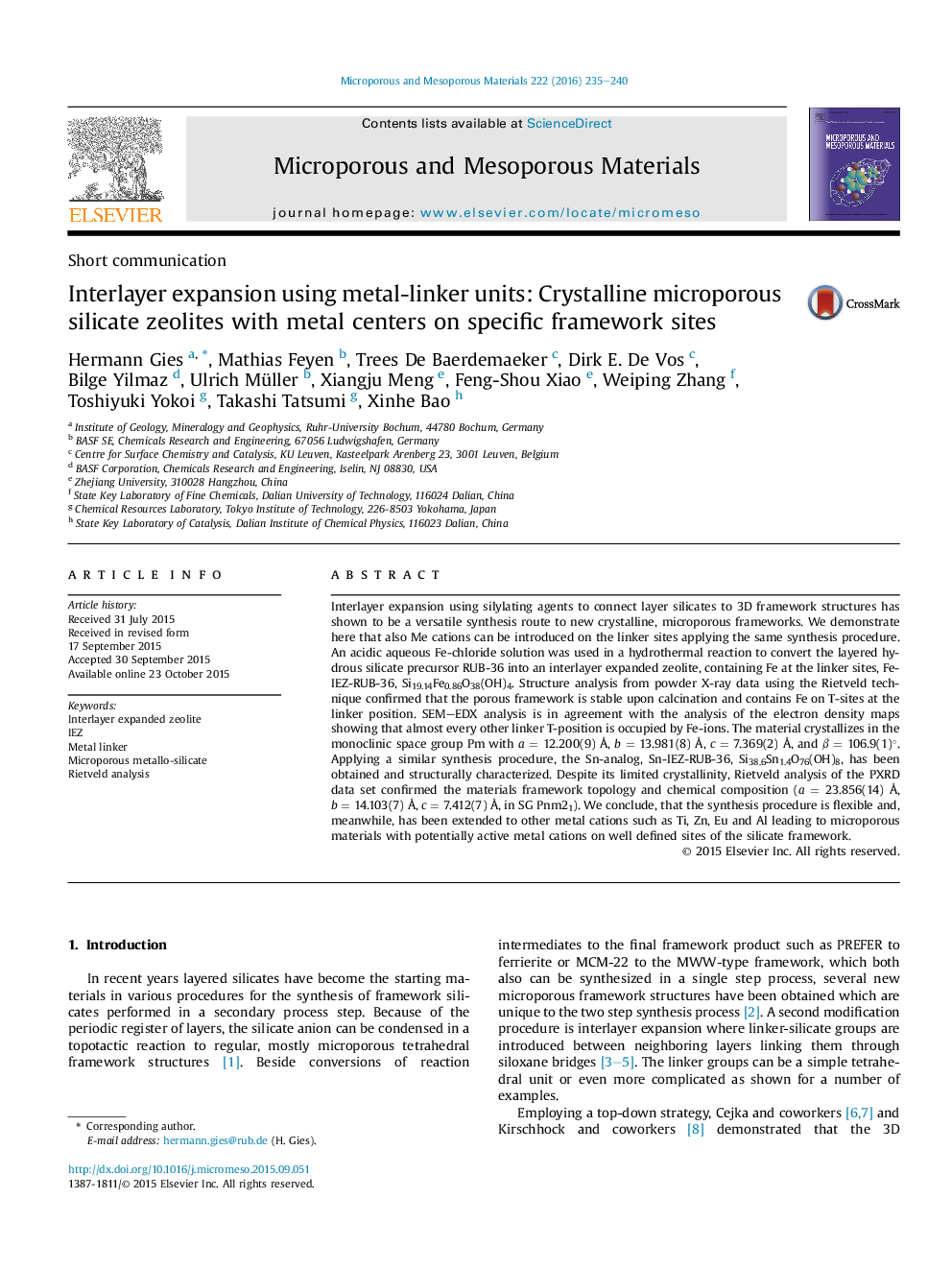| کد مقاله | کد نشریه | سال انتشار | مقاله انگلیسی | نسخه تمام متن |
|---|---|---|---|---|
| 72053 | 49009 | 2016 | 6 صفحه PDF | دانلود رایگان |

• Using a hydrous layer silicate as precursor a zeolite framework is synthesized.
• Neighboring layers are interconnected by metal–oxygen bridges.
• The metal-interlayer expanded zeolites, ME-IEZ, contain active sites on distinct framework sites.
• The new materials are crystalline and stable after calcination.
• The pore system is accessible.
Interlayer expansion using silylating agents to connect layer silicates to 3D framework structures has shown to be a versatile synthesis route to new crystalline, microporous frameworks. We demonstrate here that also Me cations can be introduced on the linker sites applying the same synthesis procedure. An acidic aqueous Fe-chloride solution was used in a hydrothermal reaction to convert the layered hydrous silicate precursor RUB-36 into an interlayer expanded zeolite, containing Fe at the linker sites, Fe-IEZ-RUB-36, Si19.14Fe0.86O38(OH)4. Structure analysis from powder X-ray data using the Rietveld technique confirmed that the porous framework is stable upon calcination and contains Fe on T-sites at the linker position. SEM–EDX analysis is in agreement with the analysis of the electron density maps showing that almost every other linker T-position is occupied by Fe-ions. The material crystallizes in the monoclinic space group Pm with a = 12.200(9) Å, b = 13.981(8) Å, c = 7.369(2) Å, and β = 106.9(1)°. Applying a similar synthesis procedure, the Sn-analog, Sn-IEZ-RUB-36, Si38.6Sn1.4O76(OH)8, has been obtained and structurally characterized. Despite its limited crystallinity, Rietveld analysis of the PXRD data set confirmed the materials framework topology and chemical composition (a = 23.856(14) Å, b = 14.103(7) Å, c = 7.412(7) Å, in SG Pnm21). We conclude, that the synthesis procedure is flexible and, meanwhile, has been extended to other metal cations such as Ti, Zn, Eu and Al leading to microporous materials with potentially active metal cations on well defined sites of the silicate framework.
Catalytically active sites at specific framework T-sites in microporous silicates are introduced via interlayer expansion using a hydrous layer silicate as precursor and Fe3+ as linker species. The resulting microporous product is crystalline, stable upon calcination and active as catalyst. The van-der-Waals representation of the pore with the color-coded Fe overemphasizes the Fe ionic radius. In addition, only every other site is occupied.Figure optionsDownload as PowerPoint slide
Journal: Microporous and Mesoporous Materials - Volume 222, 1 March 2016, Pages 235–240